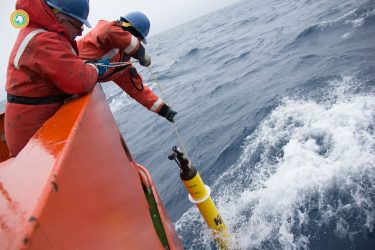
More than 100 oceanic floats are now diving and drifting in the Southern Ocean around Antarctica during the peak of winter there. These instruments are gathering data from a place and season that’s poorly studied, despite its important role in regulating the global climate.
A new study from the University of Washington, the Monterey Bay Aquarium Research Institute, Princeton University and several other oceanographic institutions uses data gathered by the floating drones over past winters to learn how much carbon dioxide is transferred by the surrounding seas. Results show that in winter the open water nearest the sea ice surrounding Antarctica releases significantly more carbon dioxide than previously believed.
“These results came as a really big surprise because previous studies found that the Southern Ocean was absorbing a lot of carbon dioxide,” said lead author Alison Gray, a UW assistant professor of oceanography. “If that’s not true, as these data suggest, then it means we need to rethink the Southern Ocean’s role in the carbon cycle and in the climate.”
Read more at UW Today »
